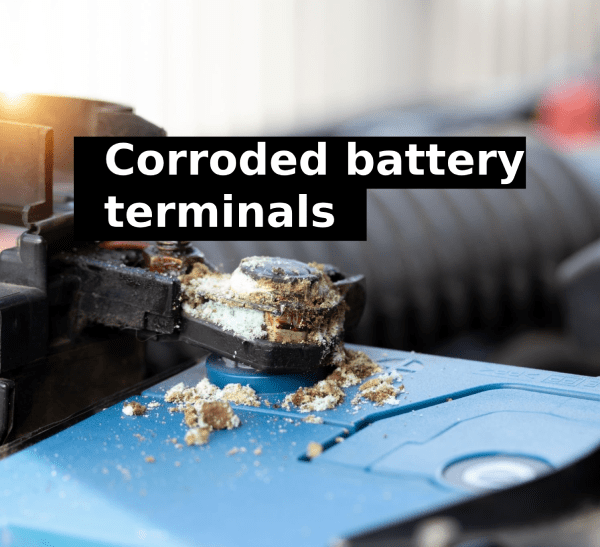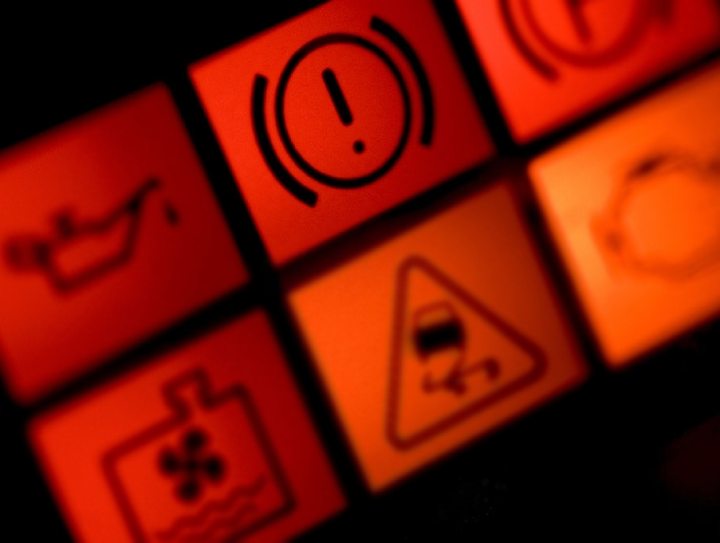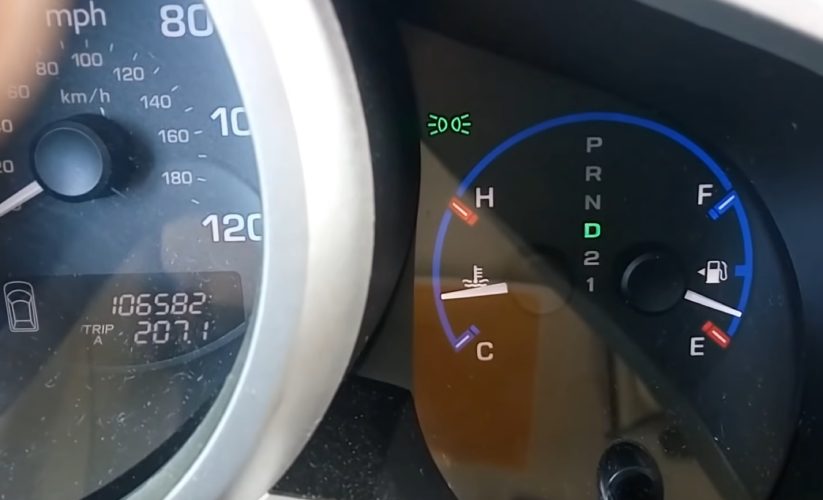Seeing the battery light on after replacing your alternator can leave you feeling like you’re stuck in an endless loop of electrical issues. But don’t lose hope – this frustrating symptom almost always stems from something minor that was missed during the repair.
This article will take you through a methodical troubleshooting guide so you can get to the bottom of the problem and get your charging system working correctly.
Possible Causes
Loose or Corroded Connections
It’s surprising how something as simple as a loose nut or wire can render an otherwise properly functioning alternator useless when it comes to charging your battery. After installing a new alternator, one of the first things to check is making sure all electrical connections are tight and clean.

Focus on the main positive and negative connections between the alternator and battery. Loose battery cables or terminal ends can interrupt the crucial flow of electricity. Use a ratchet to ensure the cable end nuts are torqued to spec. Inspect the condition of the battery terminals and clear any corrosion with a wire brush. A loose ground strap from the alternator case can also prevent the alternator from effectively charging.
Even small electrical connectors like the voltage regulator plug should be checked and re-seated firmly. The slightest bit of play or contamination in these sensitive wiring interfaces can throw off communication between components. Take the time to eliminate any questionable connections – it can mean the difference between a properly functioning charging system and a dead battery.
Damaged Wiring
The wiring between your alternator and battery handles high electrical loads which over time can cause insulation breakdown and conductor fraying. If wires appear cracked, brittle or uncovered, there may be damage shorting out circuits and preventing normal charging even with a new alternator installed.
Closely inspect the main charge wire from the alternator output terminal to the battery as well as the smaller sense wire that relays voltage information. Repair any suspect sections with electrical tape or replace wires completely as needed. Also check grounds for damage which can contribute to charging issues. Properly functioning undamaged wiring is essential to alternator operation.
Taking a methodical approach to inspecting electrical connections and wiring condition can help get to the bottom of a persistent battery light issue. Proper installation and maintenance prevents many charging system headaches.
Blown Fuse
Even though you may have installed a brand new alternator, an overlooked blown fuse can surprisingly keep the battery/charging light illuminated on your dash. Most charging system circuits are protected by fuses which should be diligently checked when diagnosing a persistent charging issue.

Consult your vehicle repair manual to locate and identify all fuses related to the operation of the alternator and charging system. Typical fuse boxes to inspect are under the hood, in the interior driver’s footwell, or within the junction box. Check for any popped fuses and replace them as needed. Also watch for fuses that may be partially blown and show resistance when testing with a multimeter. A minor short circuit somewhere in the wiring can sometimes blow a fuse just enough to cause charging problems.
Replacing any compromised fuses related to the alternator circuit should help get your battery light to turn off once properly charging again. Don’t overlook these simple safety devices when electrical issues arise.
Related content: Battery Light Comes on When Idle – Causes & Fixes
Faulty Alternator
Though unlikely with a brand-new unit, there is a small chance your replacement alternator was defective right out of the box. Intermittent faults within the alternator’s internals can fail to properly excite the rotor coils and prevent normal charging even with the engine running.
If you’ve verified all wiring connections and fuse integrity, have the alternator tested at an auto parts store or repair shop. Most can easily diagnose if the alternator is malfunctioning with a basic output test. Confirm the alternator is charging at the rated capacity before condemning other components.
Rarely does a new alternator fail, but it is possible to receive a faulty remanufactured or low-quality aftermarket unit. Proper testing can help identify a bad part to prevent endless guesswork troubleshooting.
Bad Battery
Sometimes a faulty battery with an underlying issue is the root cause of an illuminated charging system light, not the alternator itself. Installing a new alternator without confirming battery health may not remedy the problem.

Have your battery tested by a shop – they can check for bad cells as well as confirm the overall cranking capacity is within specification. Measure the resting voltage – if below 12.4V, the battery may have a poor charge. Loose or corroded connections between the battery terminals can also mimic charging system issues.
Replace the battery or have it fully charged and recheck if the battery light goes off. Certainly replacing an aged or problematic battery is a wise step when installing a new alternator. But don’t assume a new alternator will properly charge a bad battery. There are some tricks to revive a dead battery that you might want to check.
Related content: Can a Bad Battery Cause Engine Hesitation?
Computer Control Issues
The sensitive electrical management systems in modern vehicles can also mimic charging problems if faulty. Defective modules that monitor and control charging can prompt battery lights and issues even with a well-functioning alternator.
For example, the PCM, BCM, TCM, and other on-board computers must properly communicate with the alternator to vary charging rates. Fault codes pertaining to the charging system may point to control issues vs. the alternator itself. Advanced diagnostics of the network of modules may be needed to uncover any root computer control faults if an alternator replacement fails to solve the issue.
Don’t overlook that modern vehicle computers do much of the regulating and monitoring of the electrical system. Faults here can certainly cause frustrating charging system symptoms.
What Should I Do If Everything Looks Alright?
If you have checked everything, but the battery or charging system light stubbornly remains on, it’s best to have the entire electrical system inspected by a professional technician. While the fix may end up being simple, guessing or throwing parts at an illuminated charging indicator light without a proper diagnosis will likely just lead to frustration and wasted money.

Proper testing needs to be undertaken to isolate whether the culprit is the alternator itself, wiring faults, computer control issues, or an underlying battery problem. For example, a technician can check for voltage at the back of the alternator using a DVOM to verify if the unit is properly energizing. If voltage is present, the alternator itself is likely good.
From there, electrical diagrams can methodically pinpoint shorts or opens in wiring that are disrupting the charging circuit. Scanner diagnostics tap into computer data to check for faults in the networks controlling alternator function. A load test or conductance test on the battery reveals cell issues or inadequate cranking capacity.
Only comprehensive testing and inspection of the entire charging and electrical system can uncover the true root cause of a stubborn battery light. Don’t keep playing the guessing game. Seek out a knowledgeable automotive electrical technician to properly and efficiently diagnose why your charging indicator remains illuminated even after alternator replacement. Identifying and repairing the underlying issue will finally get your battery charging and electrical system working the way it should.
Related content: How Can A Bad Battery Cause A Car To Misfire?
FAQ

Why did the battery/charging light come on after I replaced my alternator?
The most common causes are loose or corroded connections, damaged wiring, a blown fuse, a faulty new alternator, or an underlying issue with the battery. Proper diagnosis and testing is needed to identify the exact cause.
What should I do if the battery light stays on after replacing the alternator?
Do not ignore the warning light. Have the charging system inspected by a professional to properly diagnose the underlying cause. Jumping to replace parts without proper testing often fails to fix the issue.
Can a blown fuse cause the battery/charging light to stay on after replacing the alternator?
Yes, if the blown fuse is related to the charging system. Check all fuses pertaining to the alternator and charging system circuits. Replace any blown fuses.
How can I test whether a new alternator is faulty and causing the battery light?
Have the new alternator bench tested to confirm it is functioning properly and delivering the correct amperage. A defective new alternator is one possibility.
Can computer or electrical issues cause the battery light to stay on?
Yes, on newer vehicles, the complex computer controls can sometimes cause charging system faults and warning lights. Advanced diagnostics may be required.
Is it safe to drive with the battery/charging light on after an alternator replacement?
No, it indicates a problem with the charging system. Driving with the light on risks fully draining and damaging the battery. Have it inspected immediately.
Engineering Coordinator with 5+ years of experience in the automotive manufacturing industry. Currently supporting vehicle development and new model launch activities at Honda Development and Manufacturing of America. Skilled at managing engineering teams, overseeing prototype builds, coordinating testing, and driving continuous process improvements. LinkedIn









